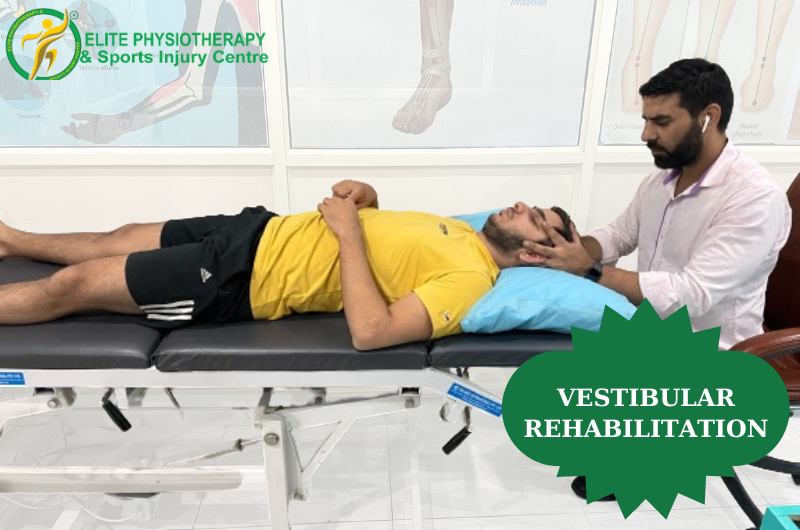
Vestibular Rehabilitation
Vestibular Rehabilitation is a specialized form of therapy designed to alleviate problems caused by vestibular disorders. This therapeutic approach focuses on restoring balance and reducing dizziness symptoms that result from inner ear imbalances. Through a personalized program, patients engage in targeted exercises that retrain the brain to recognize and process signals from the vestibular system more effectively. Techniques may include gaze stabilization, balance training, and maneuvers to address positional vertigo. Vestibular Rehabilitation empowers individuals to manage their symptoms, improve their quality of life, and regain confidence in daily activities. It’s a compassionate pathway to recovery, emphasizing patience and gradual progress.
Questions
WHAT IS VESTIBULAR REHABILITATION (VR)?
A particular type of therapy called vestibular rehabilitation (VR) or vestibular rehabilitation therapy (VRT) aims to address the fundamental as well as secondary issues brought on by vestibular diseases. The main goals of this exercise-based program are to lessen vertigo and dizziness, gaze instability, imbalance, and/or falls. Because there is relatively little vestibular function restoration, the majority of patients with vestibular disorders have a persistent impairment. Nonetheless, with compensation, people can regain function and feel better after vestibular system impairment. This occurs because the brain learns to use other senses (vision and somatosensory, i.e. body sense) to substitute for the deficient vestibular system. The health of particular parts of the nervous system (brainstem and cerebellum, visual, and somatosensory sensations) is important in determining the extent of recovery that can be gained through compensation.
HOW DOES IT WORK?
A physiotherapist will assess your symptoms and go over your medical history when you visit them. The following areas will be covered in full or in part by your assessment:
• Balance and/or leg strength/flexibility
• Gait (how you walk)
• Visual stability and mobility
• Neck mobility and neck and arm strength
• Positional testing, including an inner ear examUsing a problem-oriented approach, VRT aims to encourage compensation. This is accomplished by tailoring the exercises to the unique problem(s) that each person faces. In order to detect issues associated with a vestibular disease, a thorough clinical assessment is required prior to designing an exercise program. Three main exercise regimens can be recommended, depending on the vestibular-related condition or problems that have been identified:
1) Habituation, 2) Gaze Stabilization, and/or 3) Balance Training.
CONDITIONS/SYMPTOMS TREATED
Patients with diagnoses of dizziness, imbalance, vertigo, Meniere's disease, benign paroxysmal positional vertigo (BPPV), neck-related dizziness, and headaches are commonly referred for vestibular rehabilitation treatment. Individuals with a history of falls, strokes, or brain injuries are also potential candidates. Common ailments or symptoms that vestibular rehabilitation can assist with include:
• Dizziness or blurry vision with head movements
• Neck tightness, stiffness, and/or pain
• Imbalance or the need to hold onto objects when walking
• Headaches
• Frequent falls
• Generalized “dizziness, wooziness and foggy head” feelings
• Vertigo/spinningWHO WILL BENEFIT?
For those with symptoms of imbalance, ringing in the ears, dizziness, nausea, or persistent headaches, vestibular rehabilitation has shown great promise. Most of the time, patients' balance and dizziness issues either greatly improve or go away entirely if they keep up with the activities they have learnt. You may recover from vestibular physiotherapy sooner than you think.
Benign Paroxysmal Positional Vertigo, or BPPV, is among the most often diagnosed vestibular disorders. BPPV has been successfully treated with physiotherapy. Rehabilitating BPPV may just need a few brief therapy sessions with an emphasis on repositioning techniques. On the other hand, if the symptoms correspond with a different diagnosis, the procedure can need several weeks of progressively harder workouts. Following vestibular physiotherapy, the majority of patients will see a notable decrease in symptoms or maybe a total remission of their symptoms, which will significantly enhance their quality of life.
